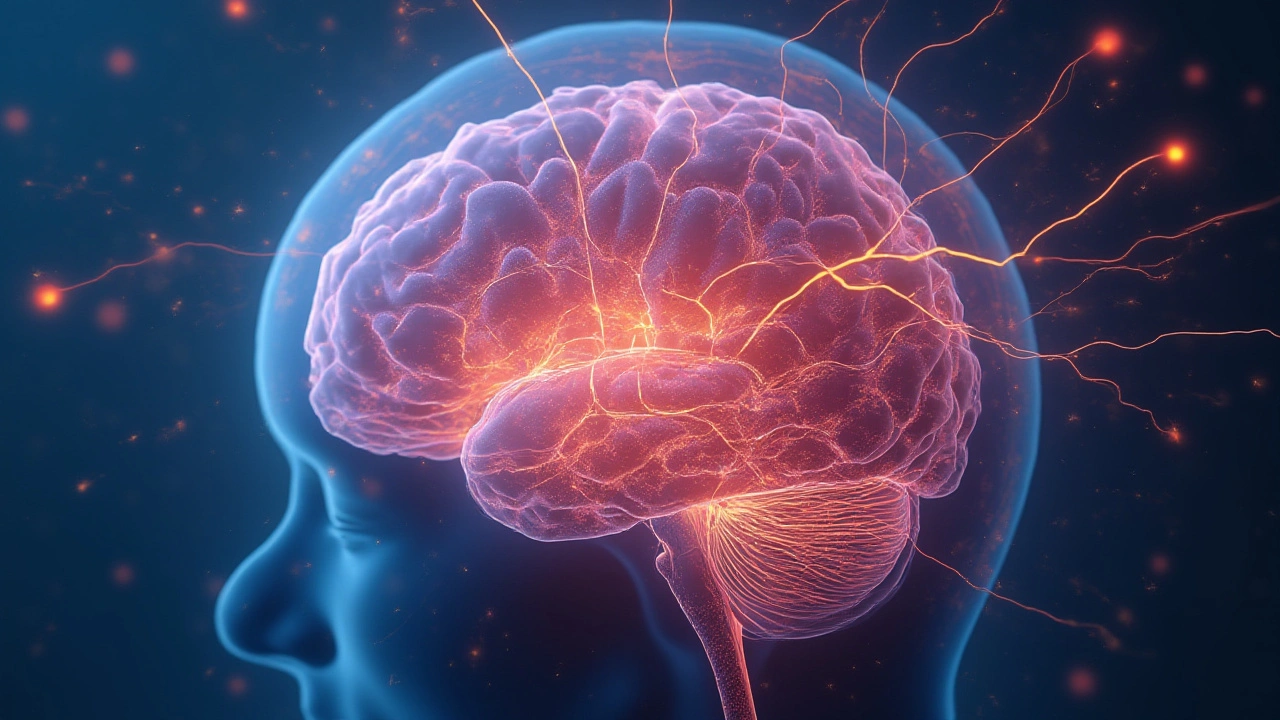Glutamate Inhibition: A Simple Guide to Protecting Your Brain
Ever heard that too much excitement can be bad? In the brain, the chemical that makes neurons fire—glutamate—can become a problem when it’s over‑active. This is where glutamate inhibition steps in. By dialing down glutamate’s signal, you can help keep brain cells safe and working smoothly.
What Glutamate Does and When It Turns Toxic
Glutamate is the main excitatory messenger in the nervous system. It helps you learn, remember, and react to the world. But when glutamate levels spike for too long, it overstimulates receptors like NMDA and AMPA. That overstimulation floods cells with calcium, damages mitochondria, and eventually kills neurons. Scientists call this process excitotoxicity, and it’s linked to strokes, traumatic brain injuries, and neurodegenerative diseases such as Alzheimer’s and ALS.
Think of glutamate like a car engine. A little revving gets you moving, but if you slam the accelerator forever, the engine overheats and breaks down. Your brain needs the same balance—enough glutamate to think and act, but not so much that it burns out.
How Glutamate Inhibition Works
Glutamate inhibition means slowing down or blocking the pathways that let glutamate fire. There are three common ways people do this:
- Medicinal blockers: Drugs like memantine, ketamine (at low doses), or dextromethorphan act on NMDA receptors, reducing the calcium surge. Doctors prescribe them for conditions like Alzheimer’s or chronic pain.
- Natural compounds: Magnesium, zinc, and certain flavonoids can modulate NMDA activity. A magnesium‑rich diet—think leafy greens, nuts, and seeds—often helps keep glutamate in check.
- Lifestyle tweaks: Reducing stress, avoiding excessive alcohol, and getting enough sleep all lower glutamate spikes. Even regular aerobic exercise has been shown to balance excitatory and inhibitory signals.
When you combine these approaches, you create a safety net for your neurons. It’s not about fully shutting down glutamate; it’s about preventing the dangerous overload.
Practical Tips to Support Glutamate Balance
Here are easy steps you can start today:
- Boost magnesium: Aim for 300‑400 mg a day from foods or a modest supplement. Split the dose to improve absorption.
- Eat antioxidant‑rich foods: Berries, dark chocolate, and green tea help protect cells from the calcium‑induced damage that glutamate can cause.
- Stay hydrated: Dehydration raises glutamate release. Sip water throughout the day, especially after workouts.
- Mind your caffeine: Too much coffee spikes glutamate. Keep intake moderate—about two cups a day.
- Consider a low‑dose NMDA antagonist: If you have a neurological condition, talk to a doctor about meds like memantine. Never self‑medicate.
These habits aren’t a cure‑all, but they give your brain a better chance to stay healthy over the long run.
When to Seek Professional Help
If you notice persistent headaches, memory lapses, mood swings, or any new neurological symptoms, it’s time to consult a healthcare professional. They can run tests, assess glutamate activity, and decide if a prescription blocker is right for you.
Bottom line: Glutamate is essential, but too much of it can hurt. By using a mix of diet, lifestyle, and—when needed—medication, you can keep the excitatory signals in a safe zone. Your brain will thank you with sharper focus, steadier mood, and better overall health.
Lamotrigine for Seizures: Mechanisms, Effectiveness, and Patient Experiences
Explore how lamotrigine helps control seizures by blocking sodium channels and lowering glutamate. Learn about its unique action and what to expect.
